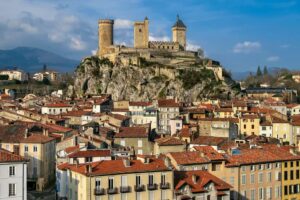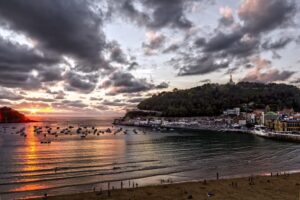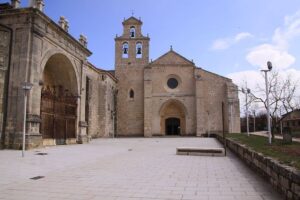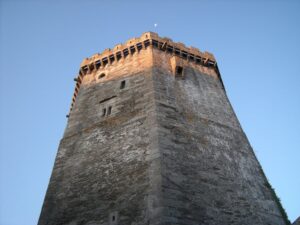
The Camino de Santiago is much more than a spiritual route or a physical challenge; it is also a culinary journey that delights the senses. For the pilgrim, each stage not only brings them closer to Santiago de Compostela, but also offers the opportunity to immerse themselves in the rich local gastronomy, especially in the deeply-rooted tradition of tapas.
Far from being mere tourists, pilgrims seek authentic and comforting experiences, and tapas are undoubtedly an essential part of that experience. They are the perfect fuel to continue the journey, a way to socialise, and a window into the culture of each region.
As your Camino de Santiago agency, we will guide you through the cities and towns where the tapas culture is especially intense. Of course, always focusing on those places that are on or very close to the route, with no need for big detours.
Índice de contenidos
Camino Francés: A feast of flavours at every step
The Camino Francés, the quintessential Jacobean route, crosses a diversity of landscapes and cultures that are directly reflected in its gastronomy. From the Pyrenees to Santiago, pilgrims will find cities where tapas are an institution, offering everything from the classic pintxos of the north to the heartier portions of Castilla y León.
Pamplona: The birthplace of the pintxo
At the start of the Camino Francés, Pamplona greets pilgrims with a pintxo culture. Here, the tradition is to hop from bar to bar, sampling small culinary masterpieces ranging from classic fried dishes (croquettes, stuffed peppers) to more innovative creations.
The Calle Estafeta and the Plaza del Castillo are key areas where social life revolves around these delights. It is common to find pintxos of chistorra, Spanish omelette (tortilla de patatas), and scrambled mushrooms, especially in autumn. The best time to enjoy pintxos is at sunset, when the bars fill with atmosphere and the counters showcase their finest offerings.
Logroño: The capital of wine and tapas
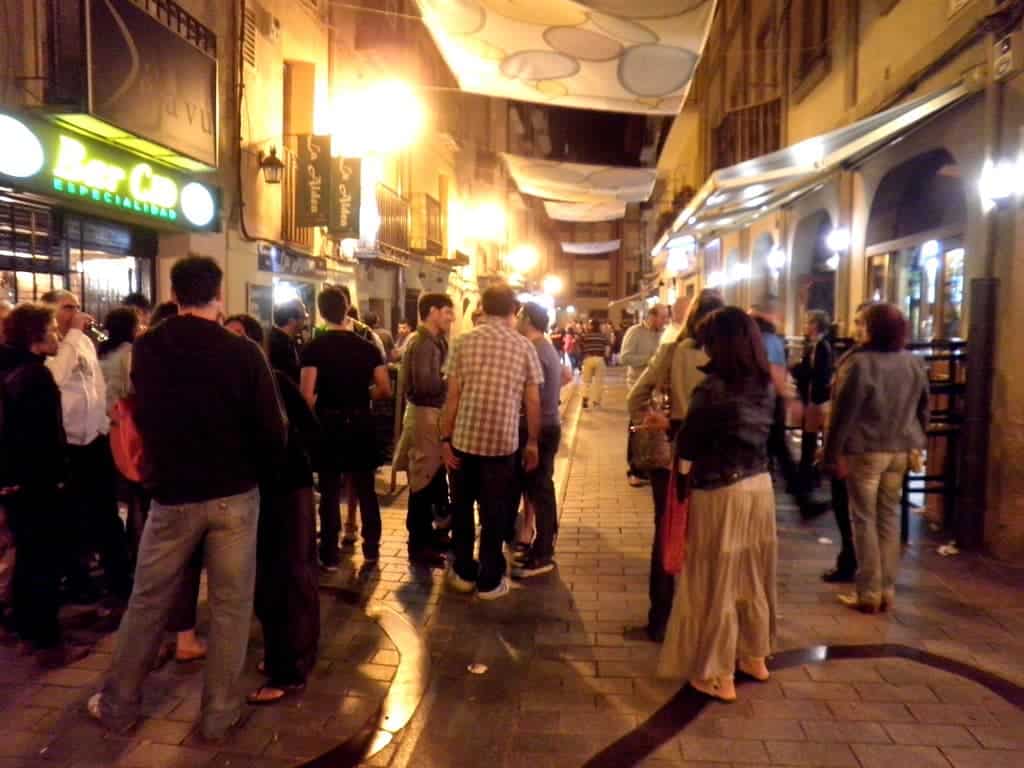
Logroño stands as a paradise for lovers of good food and drink. The famous Calle Laurel, along with Calle San Juan, are the epicentre of tapas culture in the city. Here, each bar specialises in one or two tapas, creating a unique experience where the pilgrim can savour a wide variety of flavours in a small space.
The local specialities include patatas a la riojana, chuletillas al sarmiento (grilled lamb chops), and grilled mushrooms, all of which can be paired with the excellent wines of the region. The tradition of “chiquiteo” (going from bar to bar drinking small glasses of wine) is deeply rooted, encouraging socialising and gastronomic enjoyment.
Burgos: Castilian tradition in every bite
In Castilla y León, Burgos offers a robust and traditional gastronomy, ideal for replenishing energy. The morcilla de Burgos (blood sausage), lechazo asado (roast lamb), and olla podrida (hearty stew) are hearty dishes that can also be found in tapa or ración (larger portion) format. The areas near the Cathedral and the historic centre are ideal places to find bars with generous tapas and a welcoming atmosphere. Burgos cuisine is characterised by its intense flavours and the use of local produce, perfect for the pilgrim seeking an authentic and nourishing culinary experience.
León: Free tapas with every drink
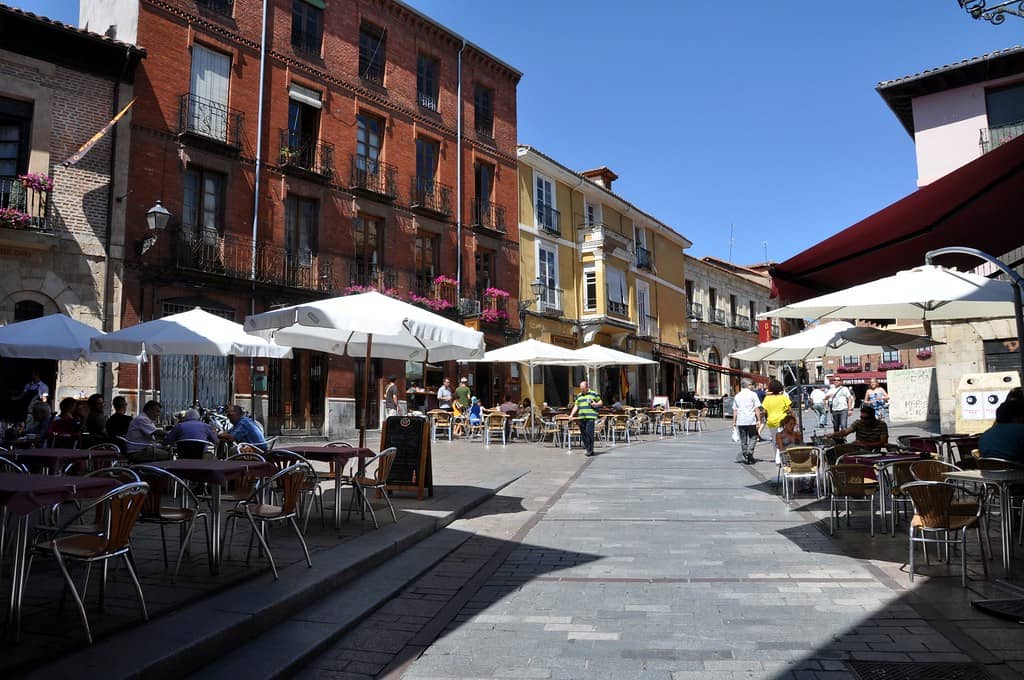
León is undoubtedly one of the most attractive cities for tapas not only on the Camino Francés but in all of Spain, thanks to its deep-rooted custom of offering a free tapa with every drink.
The Barrio Húmedo and the Barrio Romántico are the prime areas to enjoy this tradition. Here, the pilgrim can taste a wide variety of tapas, from cured beef and black pudding from León to spicy potatoes, croquettes, and regional cold cuts.
The quality and quantity of the free tapas make León an ideal place to have dinner based on tapas, socialising with other pilgrims and locals. Garlic soup and “cocido maragato” are other typical dishes you can find in the region, perfect for the colder months.
Ponferrada: The last great feast before Galicia
Ponferrada, the capital of Bierzo, is one of the last major urban centres before entering Galicia. Its cuisine, influenced both by León and Galicia, stands out for the quality of its cured meats, wines, and garden products.
The area around the Templar Castle and the old town are ideal for tapas. There are no shortage of tapas like “botillo”, “chorizo berciano”, roasted peppers, and empanadas. Furthermore, many bars in the city still follow the tradition of offering a free tapa with every drink.
The Portuguese Way: Atlantic flavours and Galician tradition
The Portuguese Way, with its Central and Coastal variants, offers a different gastronomic experience, marked by the Atlantic influence and rich Galician cuisine. From the border with Portugal to Santiago, the pilgrim will find cities where seafood, fish, and garden products are the main focus.
Tui: The Galician gateway with a river flavour
When crossing the border from Portugal, Tui is the first Galician city on the Portuguese Way and an excellent starting point to begin enjoying the local cuisine. Given its location on the banks of the River Miño, it is natural that its specialities include river products such as “sábalo” (shad) and “lamprea” (lamprey), although you can also find tapas of octopus, “empanadas”, and seafood.
The old town of Tui, close to the Cathedral, offers bars and tapas places where the atmosphere is warm and the portions generous. It is an ideal spot to try the first Galician flavours and recharge your energy before continuing the journey.
The Portuguese Way from Tui is one of the most popular options to start the route, and its cuisine is an excellent incentive.
The Northern Way: The essence of the Cantabrian coast in every pintxo
The Northern Way, which runs along the Cantabrian coast, is famous for its stunning landscapes and, of course, its exceptional gastronomy. In the Basque Country, pintxos are also the kings, small culinary masterpieces that reflect the creativity and quality of local products.
San Sebastián: High cuisine in miniature
San Sebastián has taken gastronomy in miniature to another level, combining tradition and avant-garde in every bite. The Old Town, especially the streets Fermín Calbetón and 31 de Agosto, is full of bars where each pintxo is a small work of art. Cod “pil-pil”, grilled foie gras, “txangurro”, or classic “gildas” coexist with creations worthy of a Michelin star.
San Sebastián is an unmissable destination for those crossing the north and wishing to complete their experience with a sample of the best Basque cuisine.
Bilbao: The Basque pintxo capital
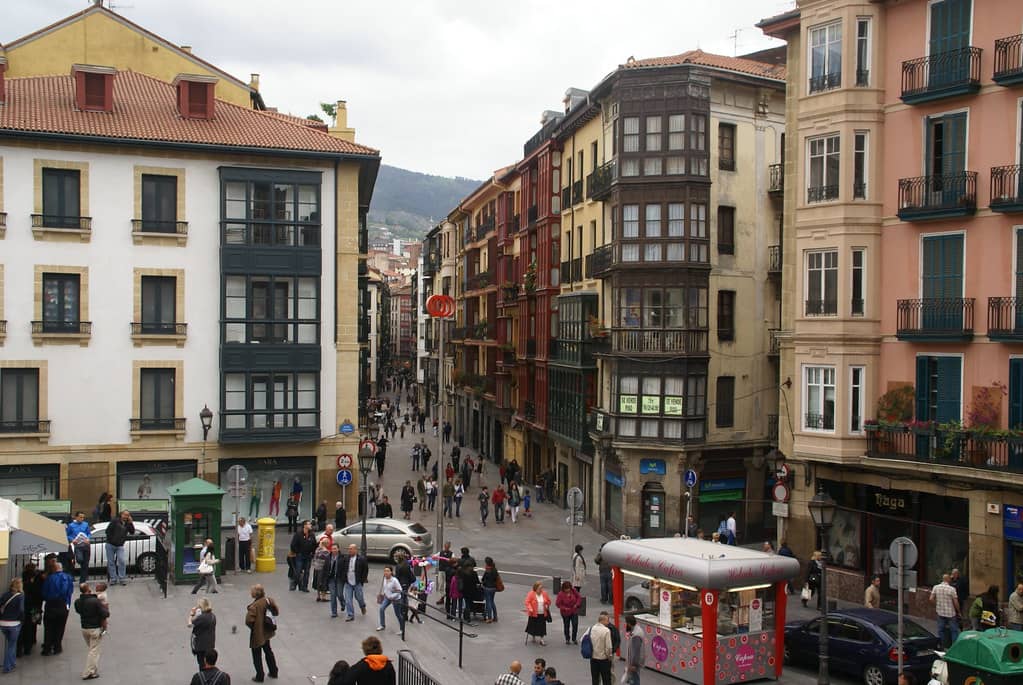
The Northern Way has several variants and not all pass through Bilbao. However, this city is an undeniable gastronomic reference in the Basque Country and a point of interest for many pilgrims who make a slight detour to enjoy its offerings.
The Old Town and the Indautxu area are the ideal places to go for tapas. The variety is immense, from more traditional options (potato omelette, gildas, croquettes) to miniature haute cuisine creations.
The poteo culture is a way of life in Bilbao, where the enjoyment of pintxos is combined with wine or “txakoli”. Seafood products, such as cod or squid, are featured in many of these delights.
For those starting the Camino de Santiago from Bilbao, the gastronomic experience is an excellent prelude to the adventure.
Ribadeo: Galician northern gateway with a maritime flavour
Those who travel the Northern Way from Ribadeo will find in this coastal town a delicious introduction to Galician cuisine. Situated on the Eo estuary, Ribadeo is known for its seafood products, especially goose barnacles, octopus, and hake. Its bars offer tapas and portions made with fresh, seasonal products.
Santiago de Compostela: The culinary grand finale
All the routes converge in Santiago de Compostela, the pilgrim’s destination and a place where Galician cuisine reaches its peak. After kilometres of walking, the culinary reward is immense.
The streets of the old town, especially Rúa do Franco and Rúa da Raíña, are full of bars and restaurants. In any of them, you can enjoy fresh seafood, octopus “a la gallega”, “empanadas”, Padrón peppers, and the famous Tarta de Santiago.
Although Santiago doesn’t always offer the free tapa with each drink as in León, the quality and variety of the gastronomic offerings more than make up for it. It’s the moment to celebrate the Camino with a good Albariño or Ribeiro wine and savour the essence of Galicia.
In short, the Camino de Santiago is an experience to be enjoyed with all the senses. Tapas, beyond just being a meal, is an immersion into the local culture, an opportunity to share, and a delicious way to recharge. ¡Buen Camino and buen provecho!

